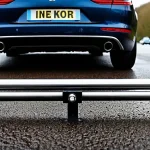Essential tips for managing tire pressure in lightweight cars during UK heatwaves
Understanding the challenges and solutions
Maintaining proper tire pressure is crucial during intense UK heatwaves, especially for lightweight car tires. Heatwave tire maintenance isn’t just about comfort—it’s about safety. High temperatures cause the air inside tires to expand, increasing pressure. For lightweight cars, this effect is more pronounced, as their tires often have less robust construction compared to heavier vehicles.
Topic to read : Maximizing engine performance: customized coolant strategies for cold uk climates
Ignoring these changes can lead to overinflation, increasing the risk of blowouts or uneven wear. Conversely, underinflation due to cooling at night can cause poor handling. Regular checks are therefore essential during UK summer motoring.
Here are key tire pressure tips for lightweight car tire care in heatwaves:
In the same genre : Exploring the impact of vehicle weight on braking efficiency on the uk’s steepest hills
- Check tire pressure at least once a week using a reliable gauge.
- Measure pressure when tires are cold, ideally in the morning before driving.
- Adjust pressure to manufacturer recommendations, considering that optimal levels might slightly differ during heatwaves.
- Inspect tires for signs of damage or unusual wear regularly.
By following these tire pressure tips and practicing diligent heatwave tire maintenance, drivers can help ensure safe, efficient performance through the UK summer motoring season.
Expert recommendations for tire pressure adjustments in hot weather
When managing tire pressure adjustment during hot weather, experts stress the importance of adhering closely to manufacturer guidelines. As temperatures rise, tire pressure naturally increases due to heat expansion. For lightweight cars, the recommended tire pressure typically falls within a range specified by the vehicle manufacturer. This range accounts for normal temperature fluctuations and maximizes both safety and fuel efficiency.
The UK motoring guidelines echo this advice, recommending regular pressure checks, especially during a heatwave. Experts advise checking tire pressure at least once a week in summer and always before long journeys. Since tires heat up from driving, measurements should be taken when the tires are cold—preferably after the car has been parked for several hours. This ensures that the pressure readings are accurate and not artificially elevated by driving heat.
Ignoring proper tire pressure adjustment during summer can reduce grip, increase tire wear, and compromise summer driving safety. Following expert tire advice, regular monitoring and adjustment help drivers prepare their cars for hot weather conditions effectively, enhancing overall summer driving confidence.
Understanding safety risks and potential issues from improper tire pressure
Insight into tire safety for confident driving
Tire safety risks rise significantly during a UK heatwave driving scenario. High temperatures cause the air inside tires to expand, increasing the risk of over-inflation. Over-inflated tires can lead to reduced contact with the road, compromising traction and increasing the chances of a dangerous skid or blowout. Conversely, under-inflation is a common problem that worsens in hot weather. Under-inflated tires generate excessive heat due to increased friction, accelerating tread wear and heightening the risk of a sudden tire failure.
A tire blowout during a heatwave is one of the most severe consequences of improper pressure. As roads become hotter and more demanding, tires subjected to incorrect inflation can weaken structurally. This damage may not be visible but can cause catastrophic failure at high speeds, especially on long summer journeys. To mitigate these risks, drivers must perform thorough tire pressure checks and visual inspections before setting off. Maintaining the manufacturer’s recommended pressure ensures optimal tread wear and better handling, enhancing overall safety during summer travel in the UK heatwave conditions.
Recognising UK-specific factors in maintaining tire pressure
Understanding UK climate tire care is essential for maintaining optimal tire pressure. The UK experiences milder summers compared to continental heatwaves, but sudden temperature swings can still impact tire performance. Unlike extreme heat seen elsewhere, British summer driving involves managing variable conditions, with shifts from sunny spells to cool rain in a single day. This fluctuating climate demands frequent tire pressure checks to ensure safety and efficiency.
Local motoring laws also influence tire maintenance practices. The UK has specific regulations regarding minimum tire tread and pressure that drivers must comply with to avoid penalties. Awareness of such rules encourages regular monitoring and adjustment of tire pressures, particularly before long journeys or seasonal changes.
Additionally, integrating regional motoring advice by routinely checking weather forecasts helps drivers anticipate sudden temperature drops or heat spikes. Preparing tires accordingly reduces risks of underinflation or overinflation, preserving tread life and preventing blowouts. By aligning tire care with regional climate nuances and legal requirements, UK drivers can ensure optimal vehicle handling and road safety all year round.
Visual tools and authoritative resources for UK motorists
Understanding tire pressure infographics is invaluable for UK drivers aiming to maintain safe and efficient vehicles. These visuals simplify complex data, showing correct pressure levels for different vehicle types and conditions at a glance. By using such infographics, motorists can quickly grasp how tire pressure impacts fuel economy, safety, and tire longevity.
Authoritative UK motoring guidelines from organisations like the RAC and AA offer detailed, expert-backed advice on tire care. They emphasise checking pressures when tires are cold, following manufacturer recommendations, and regularly inspecting tires for wear. These trusted motoring resources also provide explanations on the risks of under- or over-inflation, helping drivers avoid common pitfalls.
For those seeking further trusted guides and expert advice, official websites and reputable motoring services are excellent sources. They often feature downloadable tire pressure infographics and thorough FAQs. Regular consultation of these visual tools and reliable guidelines empowers motorists to make informed decisions, enhancing road safety and vehicle performance under varied UK driving conditions.

